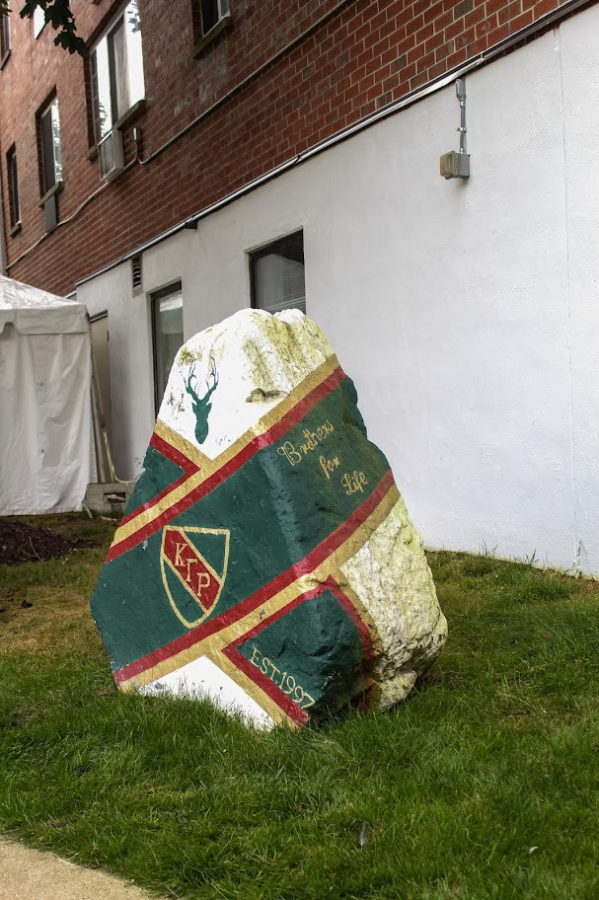Rocks in the quad: A mysterious campus tradition
What’s the deal with these painted rocks in the Bixler-Gerber Quad? Unfortunately, no one knows.
The quad is outlined in big, decorated rocks representing selective recognized student organizations (RSOs). As the University of New Haven is not known to hold many campus-wide traditions, these rocks hold a special spot in the Charger nation’s hearts.
“I think the significance of them, for the RSOs who have them is the sense of pride, the sense of history,” said Greg Overend, executive director of the center for student engagement, leadership and orientation (CSELO).
CSELO oversees the process of rock distribution. Rocks must be upkept to policy standards. If an organization loses recognition, they lose their rock.
Overend said that information was shared with him, and that “the rocks were available as a way of building identity for student organizations.”
Kappa Gamma Rho (ΚΓP) houses one of the rocks. Matthew Kozek, a mechanical engineering senior and member of ΚΓP, said: “The rock represents the longevity of the organization, we are currently coming into our 25th year at UNH, and as long as the rock is present so will KGR.”
The hunter green, red and gold rock sits facing health services decorated with a shield emblem, which Kozek said is representative of the fraternity as ΚΓP is the longest active chapter on campus in the interfraternity council.
As the Black Student Union (BSU) was the first multicultural organization to be created at the university, Saniyah Brinney, political science junior and vice president of the BSU, said, “This rock represents not only our organization, but our culture and union as a whole. Without any of those important factors, we wouldn’t have anything on campus that represents us as a community.”
Lou Annino, associate vice president of the office of facilities and alumni of the university, said, “The RSO Rocks represent a very important part of University history and student tradition.”
“For this reason, I believe the rocks should be carefully preserved,” said Annino. “However, now with so many student organizations, rocks may not be a practical way to properly represent and celebrate all such groups. While preserving the history of our past, I would like to see students perhaps consider some new and more inclusive transition that represents all student organizations.”
“Personally, I believe the university should add more rocks on campus to highlight and show off all the amazing RSOs on campus, there is so many originations filled with great persons who would love the opportunity to speak on their beliefs to the general population of the university,” said Kozek.
“If more rocks cannot be added, another idea could be to allow each RSO on campus to take a section of concrete sidewalk in the [M]axcy quad and allow it to be painted however the RSO wishes, allowing every RSO to have a public area to highlight the hard work they provide to the beautiful area of New Haven County,” said Kozek.
Overend and Annino said that the rocks were on campus long before they came to the university so the origins are still a mystery. The library does not hold any records on them in their archives, either.
If an organization wants to add a rock to the quad, Overend suggests reaching out to Undergraduate Student Government Association President Sofia Martinez.

Elisa D’Egidio is a senior studying criminal justice with a concentration in crime analysis and a minor in English. Elisa has been an active staff writer...







